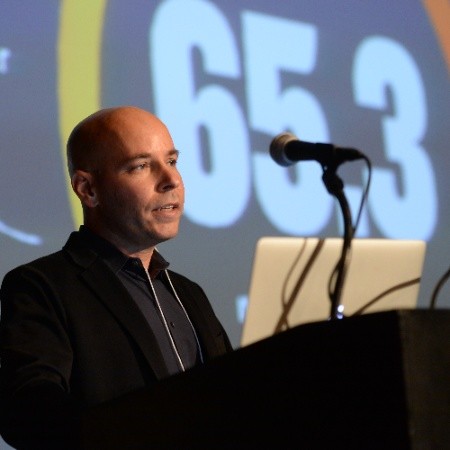Nike is no stranger to green innovation. From creating the Nike Trash Talk, the first performance basketball shoe made from manufacturing waste to working with GreenXchange, a platform for the sharing of patents. Stimulating intellectual capital and property, to spurring innovation and sustainability, Nike seems to be experiencing many shapes and forms of green innovation. Now it moves on to the next level, creating a green venture capital arm.
Nike’s new strategic investment program is called the Sustainable Business & Innovation (SB&I) Lab. Its goal is to enable and accelerate Nike’s disruptive growth and innovation through sustainability. In other words, Nike is looking to invest in green start-ups that can find win-win solutions, advancing both the company’s sustainability and profitability.
According to Nike the Lab will invest in two types of portfolios:
(i) Closed loop - a vision for zero waste of natural resources in a product's journey from raw materials to finished state to post-consumer stage, and (ii) Activating the inactive - motivating and inspiring inactive populations to lead more active and healthy lives.
How much money will Nike put into this new initiative? It’s not clear yet. Bloomberg reported that Nike declined to get into specifics and was only willing to say that the effort is in its early stages and hasn’t made investments, which would need to be approved by management. Yet Nike already made an indication of its intentions by hiring a couple of senior venture capital investment professionals to run the Lab, such as Avi Sahi, who, prior to joining Nike, worked as a VP at Perseus, a $2.5 billion private equity fund, and John Hull, who previously served as managing director at Marquam Hill Capital, OVP Venture Partners and Intel’s venture arm.
Nike’s move is a bit unorthodox. It’s not that it is unusual to see companies establishing VC investment arms to help keep themselves ahead of competition, but the move is more common in high-tech industries such as IT or pharmaceuticals. Consumer goods companies like Nike have more commonly used in-house R&D and acquisitions of grown-up companies to accelerate sustainability and growth. My guess is that Nike understood that in terms of cost-benefit, it is worthwhile to explore this new route, given the economic and sustainabilty challenges Nike is facing.
Not that Nike is in a bad situation – only two weeks ago the company reported on a strong quarter with a 15% rise in earnings and future orders that are up 16% at $8.5 billion. Yet, as the Wall-Street Journal reported, gross margin fell to 44.3% from 47% partly because of higher product costs. Executives at Nike, according to the newspaper, have also warned that the cost pressures would continue to weigh on margin in the near future.
Now, Nike can increase prices on its products as it did last year to offset the rise in costs, but I guess that in the current economic environment, this response has its limits. Therefore it looks like the focus shifts to reducing costs, and this is where the Lab gets into the picture as innovation is probably the best way to generate effective cost reductions for the long term.
The company’s sustainability commitments also create a need for innovation. Only a couple of weeks ago, I wrote here about Nike’s new commitment, following Greenpeace's Detox campaign, to reach the goal of zero discharge of hazardous chemicals in its supply chain by 2020. Nike wrote that “we will work tirelessly to effect system change across the industry towards this goal. This commitment includes sustained investment in moving industry, government, science and technology to deliver on systemic change.” It’s clear that the Lab will have a key role in this process, making sure that Nike will meet this goal.
Establishing an investment program and putting money in start-ups does not necessarily guarantee success (Solyndra is not the only example), but as Nike knows by now, there are many creative minds outside of Nike, so why not get some of them to be creative for the company? You might wonder why Nike couldn’t just hire them to do in-house R&D. The answer is that first it might be more cost effective to invest in start-ups and second, start-ups have their own innovative dynamics that are different from what you’ll find in an established R&D department in a large company, so why not enjoy both worlds?
When writer Elizabeth Kolbert asked energy guru Amory Lovins about thinking outside the box, Lovins responded: “There is no box.” This is exactly the state of mind behind Nike’s new VC arm. Will this new approach prove itself as better or more effective than more traditional ‘in/outside the box’ approaches? Only time will tell.
Image credit: tomat3, Flickr Creative Commons
Raz Godelnik is the co-founder and CEO of Eco-Libris, a green company working to green up the book industry in the digital age. He is also an adjunct professor in the University of Delaware’s Alfred Lerner College of Business and Economics.

Raz Godelnik is an Assistant Professor and the Co-Director of the MS in Strategic Design & Management program at Parsons School of Design in New York. Currently, his research projects focus on the impact of the sharing economy on traditional business, the sharing economy and cities’ resilience, the future of design thinking, and the integration of sustainability into Millennials’ lifestyles. Raz is the co-founder of two green startups – Hemper Jeans and Eco-Libris and holds an MBA from Tel Aviv University.














